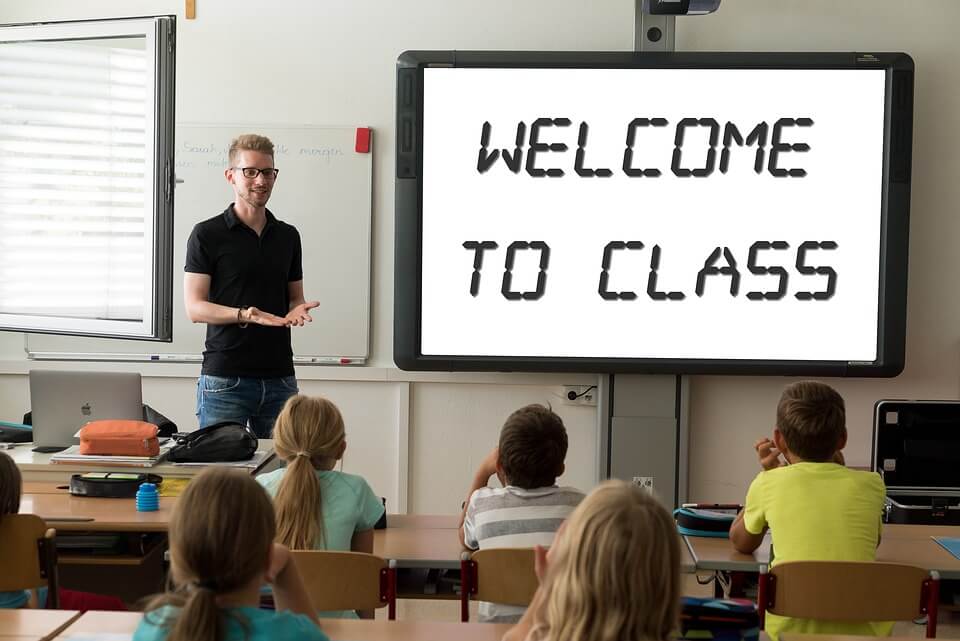
India has many schools but no teachers.
Uttar Pradesh is the worst affected state in India with a dearth of three lakh teachers. Bihar needs 2.60 lakh teachers and West Bengal one lakh. Delhi alone has a shortfall of 12,000 teachers to manage the government schools.
Even prestigious institutions like IITs are facing a shortage of around 41 per cent faculty members.
Almost 20 percent of the teachers in schools do not fulfill the criteria laid down by the National Council for Teachers’ Education (NCTE), the apex body for teacher education, training and research in the country.
According to an estimate India will need 20 lakh new teachers by 2015. But where is this gap going to be filled up. Teaching happens to one of the lowest paid profession and the last choices for jobseeker. What else can you expect in a scenario where a call centre employee having much lesser qualification gets double that of a mid-level teacher in a private school?
There is a massive demand and supply gap of eight Lakh teachers for Class 1-8 and 12 lakh teachers for class 9-12. And if this trend continues there could be— the shortfall could be of 25 Lakh teachers in the next five years or so.
While countries, like USA, UK and China, have a teacher-pupil ratio of below 30, India has, just 52 Lakh teachers against a requirement of 60 Lakh teachers for Classes I-VIII – well below the 1:40 ratio. While the pupil-teacher is a shade better in the higher classes i.e. 1:33 for Classes IX to XII, 1:25 in higher education, that’s because many students drop out. And if everyone in the age group 15-19 years were to start attending school, India would need about 38 Lakh teachers for Classes IX to XII– a shortage of 12 Lakh teachers.
Nearly 10% of the teachers are above 55 years of age. With 6.5% teachers retiring or leaving the profession each year, some 3,50,000 teachers will be left at the primary and middle level. And if statistics is to be believed, deficiency of teachers will increase to 2,31,000. About 90 percent of this shortage will be in the sectors like information technology, computer sciences and engineering that have driven India’s growth in the last decade.
The scenario in the higher education sectors is no better with the top 22 universities facing almost 34 percent shortage of teaching jobs. As against 11,085 sanctioned posts, some 3,777 posts in the 22 central universities are lying vacant.
According to sources, the situation is so bad that many temporary and guest faculties are being appointed on contract by many new central universities to fill up the void. For instance IGNOU has nearly 40% teaching posts lying vacant, Allahabad University has 43.5 %, JNU has 32.5% vacancy and Delhi University has around 51 % vacancies to be filled. While Sikkim University seems to be the worst hit with as many as 84 percent vacancies for teachers.
If, you find this shocking enough wait till you figure out the difficulties that the elite IITs are facing on account of non-availability of faculty members. As against a staff shortage of 1065 vacancies in the seven old IITs in 2009-10—today, IIT Kharagpur has the maximum shortage of 299 posts, followed by IIT Bombay (222), IIT Roorkee (194), IIT Madras (138), IIT Delhi (78), IIT Kanpur (69) and IIT Guwahati (65).
The problem has been compounded with the opening of eight new IITs during 2009 and 2010 as the new institutions are struggling to fill 280 faculty positions. According to one estimate the 15 IITs, will need 12,000 academics over the next 10 to 12 years to maintain the current student teacher ratio of 10:1.
As far as teacher shortage is concerned, the seven IIMs are slightly better off with just 95 vacant posts but they is a requirement of 392 more management gurus if the seven new IIMs planned to come up have to see the light of the day over the next three years.
This brings us to the question- why are teachers becoming an endangered species?
While many reasons can be attributed to this – one of the most plausible answers is that many experienced teachers in our country are either migrating abroad or changing their career for better prospects.
Countries like USA and Britain having shortage of Science, Math and English teachers place advertisements in newspapers or Internet to attract Indian academics. Management Consultants like Ma-foi have been recruiting teachers for schools in Dubai and Britain, where there is a big demand for Indian teachers. India is the fourth largest supplier of teachers to Britain.
Meanwhile In the desperation to churn out teachers in large numbers, it seems little attention is being paid to their qualifications. According to a study by the National University of Educational Planning and Education (NUEPA), about a quarter of all teachers taking Classes I to VIII have studied only till the secondary stage. Another quarter have studied up to the senior secondary stage. And only 31% of teachers got in-service training, the study observed.
Though some state governments have also been appointing para-teachers, or contractual teachers to fill in the gap—this is proving counterproductive as nearly 44% para-teachers are untrained. They are not specifically qualified to teach children and in any case paid anything between Rs 1,500 and Rs 2,500 per month so one can imagine their motivation level.
When it comes to that even regular teachers don’t fare much better as their pay scales range between Rs 4,500 for primary school, Rs 5,500 for secondary and Rs 6,500 for senior secondary level (PGT) teachers. Though in many private schools, the pay is even lower.

